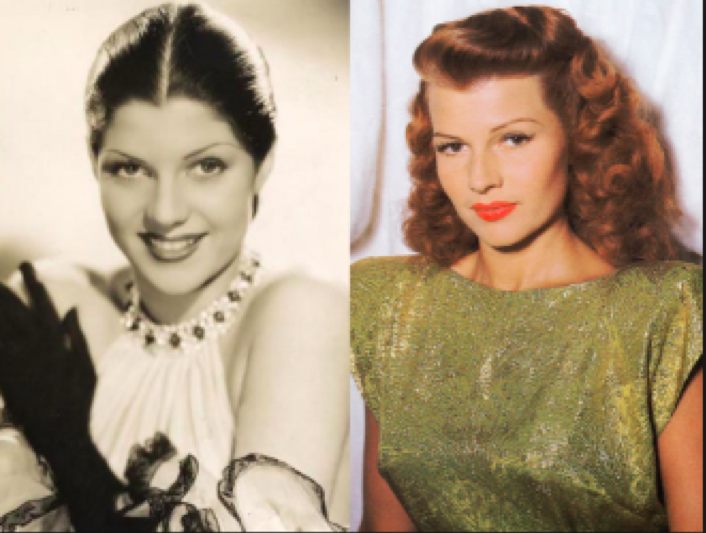Cw: suicide, mental health
Hollywood is the epicentre of commercial dreams. The dream, however, has particularly suffered in recent years. From the dawn of American filmmaking, generations of stars have graced the silver screen, acting as idols for the masses. The rose-coloured façade of Hollywood, with all its beauty and comfort has worn thin, especially in regards to Harvey Weinstein, diversity and the #MeToo Movement.
Yet, depravity and destruction are the oldest occupants of Hollywood. Such deceit stretches over eighty years, further than commonly thought, proving that Hollywood has always been the land where dreams come to die. This article aims to give a short but emotional presentation of Old Hollywood, making the modern film industry look comparatively tame.
Old Hollywood, sometimes referred to as the ‘Golden Age of Cinema’, spans the years from 1910s until the 1960s. Preserving an image of red-carpet glamour and visual spectacular, Old Hollywood gave birth to movie icons such as Marilyn Monroe, Audrey Hepburn, Marlon Brando, Elizabeth Taylor and Clark Gable. These names should be familiar with you, as pop culture has strived to protect their images of desire and fantasy.
However, dig a little deeper past these few recognisable names and you will discover a litany of individuals who were figuratively or literally killed by Hollywood. Whether by alcoholism, drug addiction, mental mistreatment, or self-neglect, Old Hollywood has claimed a myriad of lives. Many of which Hollywood has forged to forget.
From the outside during the first fifty years of Hollywood, actors and actresses personified niche stereotypes. This included characters such as the ‘Latin Lover’, ‘Blonde Bombshell, ‘Femme Fatale’, ‘Screwball Comic’, or ‘Gangster’. To suit a certain typecast, aspiring actors and actresses sold their identity for the hopes of fame and wealth.
One such case is the story of Margartia Carmen Cansino, known today as Rita Hayworth, ‘The Love Goddess’. Born to an Irish mother and Spanish father, Hayworth was contracted to hide her ‘exotic’ descent by having her dark hair coloured auburn red and forehead reshaped with electrolysis, an uncomfortable procedure of removing hair with electricity to achieve a more Anglo-Saxon appearance. Although a major Hollywood star, Rita Hayworth was abused by her studio boss and suffered multiple mental breakdowns, many of which were discredited as ‘difficult behaviour’. In 1968, Hayworth revealed her unhappiness during her film career, stating, “I used to have to punch a time clock at Columbia. Every day of my life. That’s what it was like. I was under exclusive contract, like they owned me.” Hayworth went on to describe her dressing room as being bugged and how she was forbidden to go out with anybody without studio approval, a level of possession in which “No one can live that way.”
No audience member could see Rita’s despair on the silver screen, nor should they. Reality was changed for the sake of a good profit.
She was far from alone. The abuse of countless performers was hidden or ignored as ‘the way things are.’ Linda Darnell, Judy Garland, Dorothy Dandridge, Carole Landis, and Veronica Lake were all massive stars of their day. All died dispirited, in pain and alone before turning fifty-one. The youngest being Carole Landis, known literally as “The Chest” and “The Ping Girl” for her curves, committing suicide aged twenty-nine.
Their male counterparts suffered no better. The effects of alcohol and stress ravaged John Gilbert, John Garfield, John Barrymore, and Montgomery Clift all before the age of sixty-one. Many of these men endured terrible mental health, and turned to the bottle as medication.
Most likely you do not recognise these names but they were no different than the stars of today. Except, they were actively punished for poor mental health, reduced to nicknames solely based on their body parts, and tossed out when their niche grew tiresome. There was no room for help or encouragement to seek it. These men and women were people with authentic names and stories that were changed at whim to suit the fairy-tale narrative that has enabled Hollywood to become a billion dollar industry.
I don’t expect people to suddenly cry revenge or remorse for these people, but instead realize that Hollywood has always been perverse. It was just better at hiding it. This article is a brief recognition to those already lost to the underbelly of the movies. I encourage anyone to learn more about these people and their lives. It is more often that not far more interesting than the movies they made legendary.
Words by Charlotte Huston

